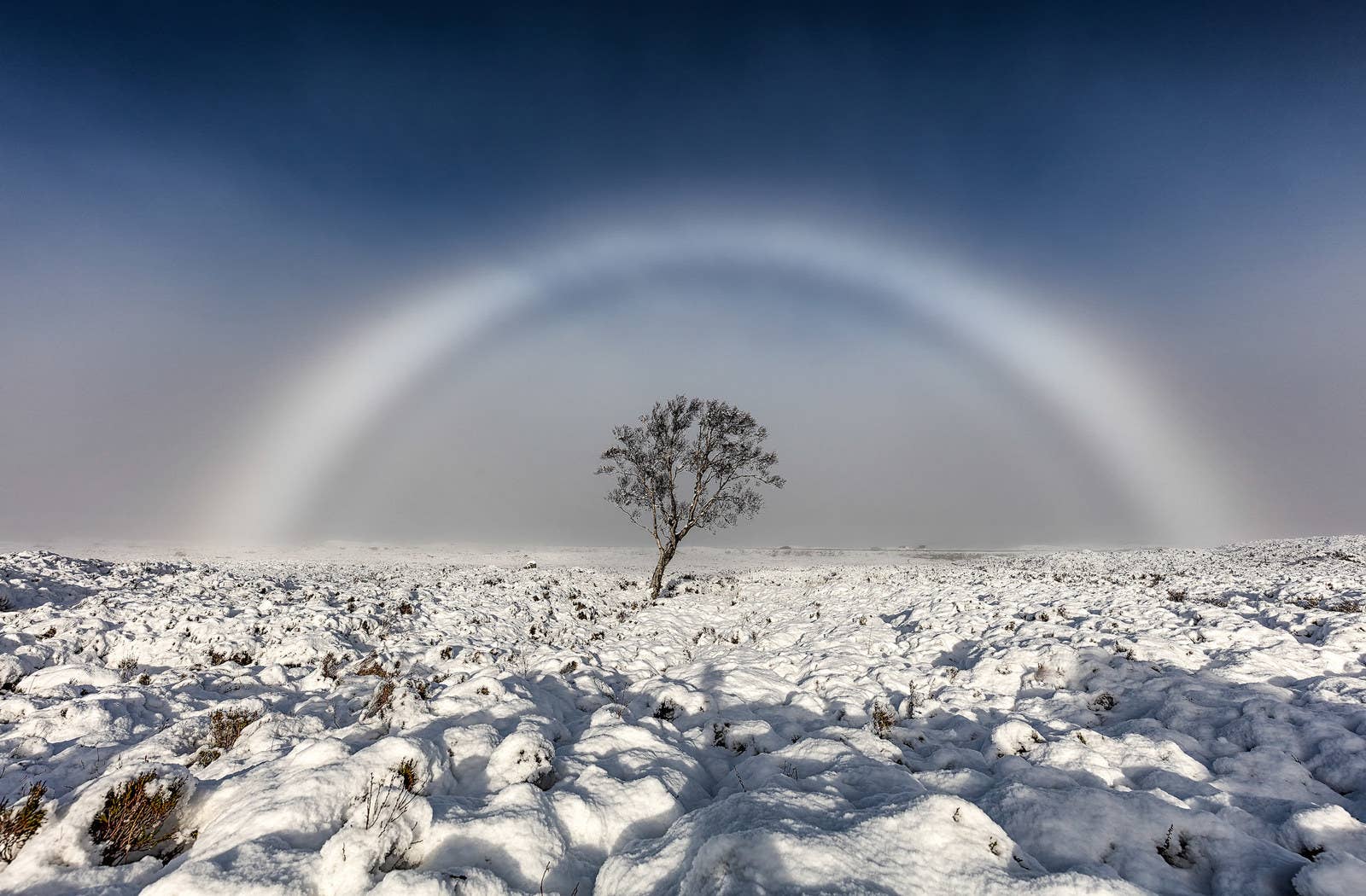Natural Phenomena
FOGBOW


Fogbows – sometimes called white rainbows, cloudbows or ghost rainbows – are made much as rainbows are, from the same configuration of sunlight and moisture. A fogbow is similar in some respects to a traditional rainbow forming from sunlight interacting with water droplets contained in fog, mist or cloud rather than interacting with raindrops as it does in a classical rainbow.
These water droplets are much smaller than raindrops, nearly always less than 0.1 mm in diameter. These tiny droplets cause the light to undergo different physical processes, most notably diffraction, which leads to fogbows appearing to be devoid of colour. It is for this reason that fogbows are sometimes known as white rainbows. The water droplets that make up fog are so tiny compared to raindrops, between 10 and 1000 times smaller, that while the light still reflects from the water droplet back towards the observer, the process of diffraction of the light by the droplet becomes a dominant effect.
The process of diffraction broadens the reflected beam of light which smears out the colours which give the characteristic ghostly white, or very faintly coloured fogbow. This also makes the fogbow much broader than a rainbow.
Fogbows are almost as large as rainbows but much broader.
On hills, mountains and in cold sea mists are where you will most often see a fogbow. But as the image shows, they can be found anywhere provided there is thin fog and fairly bright sunshine.
These water droplets are much smaller than raindrops, nearly always less than 0.1 mm in diameter. These tiny droplets cause the light to undergo different physical processes, most notably diffraction, which leads to fogbows appearing to be devoid of colour. It is for this reason that fogbows are sometimes known as white rainbows. The water droplets that make up fog are so tiny compared to raindrops, between 10 and 1000 times smaller, that while the light still reflects from the water droplet back towards the observer, the process of diffraction of the light by the droplet becomes a dominant effect.
The process of diffraction broadens the reflected beam of light which smears out the colours which give the characteristic ghostly white, or very faintly coloured fogbow. This also makes the fogbow much broader than a rainbow.
Fogbows are almost as large as rainbows but much broader.
On hills, mountains and in cold sea mists are where you will most often see a fogbow. But as the image shows, they can be found anywhere provided there is thin fog and fairly bright sunshine.


Komentar
Posting Komentar